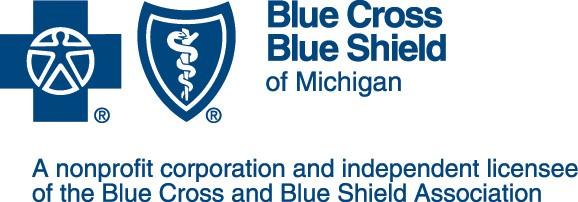NEWS & EVENTS
SPECIALTY CARE
Originally appeared as an August 17, 2023, message to all MCT2D PO administrative leads, PO primary contacts, and PO clinical champions, as well as primary care practice clinical champions.
We’re sharing updates about the Blue Cross Blue Shield of Michigan and Blue Care Network changes to GLP-1 RA coverage which went into effect on August 15, 2023—originally announced in July edition of The Record.
Effective August 15, Blue Cross and BCN will require a prior authorization for the following medications: Bydureon®, Byetta®, Mounjaro®, Ozempic®, Rybelsus®, Trulicity®, and Victoza®.
Payment from Blue Cross and BCN will require one of the following:
- Being used for the treatment of Type 2 diabetes (T2D)
- Trial of one generic or preferred medication for the treatment ofT2D
- Note: Metformin and GLP-1 RA does not meet this criteria*
*Patients with a pharmacy previous claim identified within the past 12 months for a generic or preferred medication for the treatment of T2D (excluding metformin and GLP-1 RA) will be approved for coverage of their GLP-1 RA at point-of-sale. Members that do not have a previous pharmacy claim identified within the past 12 months for a generic or preferred medication for the treatment of T2D will require a prior authorization to be submitted by their provider to attest that they have a diagnosis of T2D for coverage.
We’re providing some additional information based on discussions with Blue Cross.
Please note, we announced a similar change that went into effect on February 1, 2023.Patients that were new starts to T2D GLP-1 RA therapy (i.e., patients that did not have a pharmacy claim for the same GLP-1 RA drug identified in the previous 180-day period) were subject to the requirements outlined above starting on February 1, 2023.Patients that were existing users of T2D GLP-1 RA therapy (i.e., patients that had a pharmacy claim for the same GLP-1 RA drug identified in the previous 180-day period) were able to continue coverage up until August 15, 2023 without having a confirmed diagnosis of T2D.Effective August 15, 2023, all commercial users of T2D GLP-1 RA therapy (new starts AND existing users) are required to have a confirmed diagnosis of T2D for coverage.
Many patients with type 2 diabetes will be using GLP-1 RAs as a first line treatment and won’t meet the second criteria of having tried another T2D medication. Why is this one of the criteria?
Blue Cross and BCN understands that there is a proportion of patients who use GLP-1 RAs as first line treatment for T2D in order to reduce their cardiovascular and renal risk, as is concordant with current ADA guidelines.However, due to the recent shortages of Saxenda and Wegovy, which are FDA-approved for weight loss, there has been a growing number of members without a diagnosis of T2D who have started to use the diabetes labeled GLP-1 RA medications off-label for weight loss. Unfortunately, this situation has caused downstream shortages of these diabetes labeled GLP-1 RA medications for patients who do have a diagnosis of T2D, resulting in them being unable to obtain their medication. Therefore, the goal in requiring a confirmation of the member’s diagnosis is to ensure that members with T2D have continued access to these therapies to avoid further shortages of this clinically necessary treatment.
How do we demonstrate that a patient has type 2 diabetes and what is the burden on the physician?
Any individual in the office can complete the attestation that a patient has T2D. Physician input is rarely if ever needed.
One of our MCT2D contacts who works as centralized prior authorization staff reports that she takes the following steps to complete a prior authorization:
- Review the last one to two PCP visit notes and looks for a documented diagnosis code for the visit – if a T2D diagnosis code is found, then attest to the patient having T2D.
- If no diagnosis code is found in the visit notes, review the problem list, and if T2D is listed, attest that the patient has T2D.
- If T2D is not listed in the problem list, then message the PCP and ask if the patient has T2D. If the physician says yes, then attest to the patient having T2D. If the PCP says no, or says the patient has prediabetes or obesity, then inform the PCP that the medication is no longer covered for these indications.
Our prior authorization contact says that these steps only take a few minutes, and she typically gets prior authorization approval the same day after attesting. Blue Cross confirmed that this process for attesting is approved and no supporting documentation is needed.
Will Blue Cross and BCN implement any auto-look backs to avoid the need for a PA?
As described above, Blue Cross and BCN currently implements 12-month auto-lookback on pharmacy claims to confirm the diagnosis of T2D. If a pharmacy claim is identified (excluding metformin or GLP-1 RA) in the last 12 months, a PA will NOT be required. In a brief review by Blue Cross and BCN approximately half of all commercial patients will meet the pharmacy claims auto-lookback criteria.Beginning later this fall, Blue Cross and BCN will implement an auto-look back on medical claims. If a medical claim is found for T2D (any E11 code) in the last 12 months, a PA will NOT be required.Also, given the August 15, 2023, changes, Blue Cross and BCN has begun doing their own medical review of patients on a GLP-1 RA that were grandfathered in as of February 1, 2023, due to having a prior GLP-1 RA prescription – if a T2D diagnosis code is found, they are flagged and will not require any further PA.
Blue Cross or BCN has assured us that this change will have minimal impact on physicians and their teams, and they are working to reduce this even further through the auto-look backs.
We at MCT2D value the opportunity to share your feedback with insurance companies and value Blue Cross and BCN’s willingness to partner with us to ease the burden of prior authorization on clinicians and your teams. Please continue to provide us feedback about how we can best advocate and help you.



